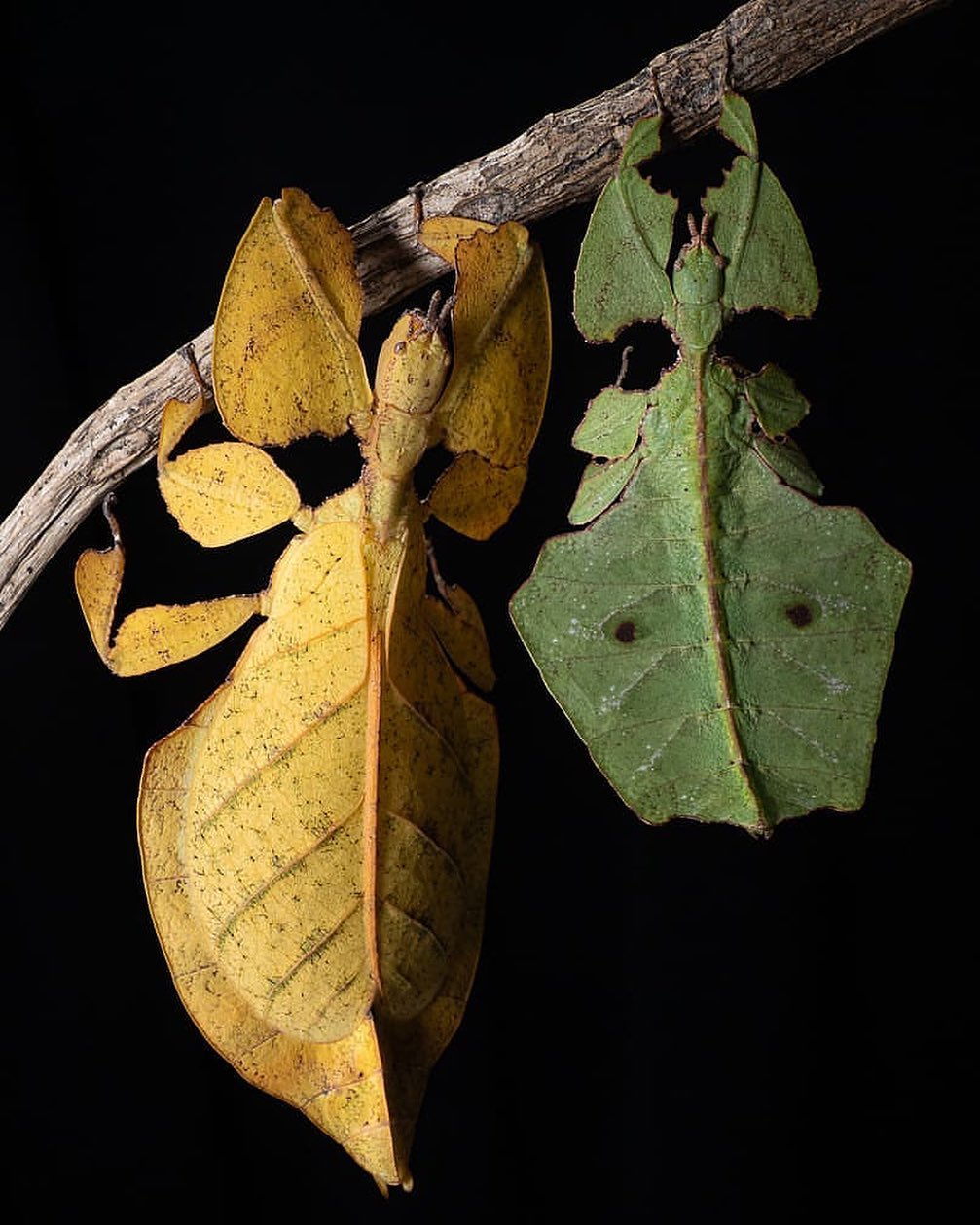 Pin
Pin Aspergillus fumigatus / US Department of Health and Human Services., Public domain, via Wikimedia Commons
Before you dive into this article, here’s a heads-up: What you’re about to read might make you feel uneasy. The world of fungi is full of hidden dangers, some of which are far more deadly than you might imagine. While most fungi are harmless, there are certain species that can wreak havoc on your health, especially if you’re exposed in the wrong way or at the wrong time. These infections can be swift, severe, and in some cases, even deadly.
The most deadly fungus in existence doesn’t care about how strong or healthy you are—it simply looks for an opportunity to invade and take over. If you’re someone who doesn’t mind a little spooky truth about the invisible dangers around us, then read on. We’ll walk through the world’s most dangerous fungi, how they spread, and most importantly, how you can protect yourself. It’s a tough read, but knowing these facts could save your life. So, proceed with caution—this is serious stuff.
Table of Contents
1. Aspergillus fumigatus – The Invisible Lung Killer
 Pin
Pin Aspergillus fumigatus / US Department of Health and Human Services., Public domain, via Wikimedia Commons
Aspergillus fumigatus is the most deadly fungus you’ve probably never heard about. It’s floating around in the air all the time—inside your house, outside in the soil, even in the dust on your desk. Normally, your immune system just clears it out without a problem. But if your immune system is weak, like after a transplant or during cancer treatment, this fungus turns deadly fast. It sneaks into your lungs, multiplies, and causes something called invasive aspergillosis. That means it doesn’t just stay in your lungs—it spreads into your blood, brain, and organs.
It’s scary because it starts with flu-like symptoms, which seem harmless. But within days, it can turn fatal if not caught early. What’s worse? It’s tough to detect, and even harder to treat if your body’s defenses are down. Hospitals try to control its spread, but it’s almost impossible to eliminate from the environment completely. Aspergillus fumigatus is the silent predator in the fungal world—and the most deadly fungus in day-to-day life.
2. Cryptococcus neoformans – The Brain Invader
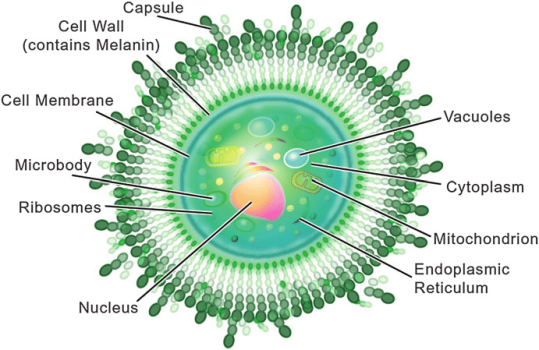 Pin
Pin Cryptococcus neoformans / Image from Research Gate
Cryptococcus neoformans sounds like something from a sci-fi movie, but it’s very real—and seriously deadly. This fungus is found in bird droppings and soil, especially around pigeons. You might walk past it every day without knowing it. The danger starts when its spores get into your lungs. For most healthy people, it’s no big deal. But for those with weakened immune systems—like people with HIV/AIDS—it doesn’t stop at the lungs. It moves straight to the brain.
Once it reaches the brain, it causes cryptococcal meningitis. That’s inflammation in the brain and spinal cord, and it’s just as brutal as it sounds. Symptoms start off slow—headache, fever, maybe some confusion. Then things spiral. Without fast treatment, this fungus kills. Every year, it’s responsible for over 180,000 deaths, especially in low-income countries where medical care is limited.
Cryptococcus doesn’t get headlines, but it’s one of the most deadly fungus infections worldwide. The worst part? People don’t realize they’ve been exposed until it’s almost too late.
3. Candida auris – The Drug-Resistant Superfungus
 Pin
Pin Candida auris / Shawn Lockhart, Public domain, via Wikimedia Commons
Candida auris is a nightmare for hospitals. It’s not just one of the most deadly fungus species—it’s a fungus that’s evolving fast, and it’s hard to kill. First discovered in 2009, it’s already spread to over 40 countries. What makes it terrifying? It doesn’t respond to common antifungal drugs. That means once it infects someone, doctors often don’t have many treatment options left.
C. auris can get into your bloodstream and cause sepsis—a life-threatening condition. It mainly attacks people who are already sick: those in ICU, with catheters, or on breathing machines. What’s worse is that it sticks to hospital surfaces, beds, even walls. Standard disinfectants don’t always work. So, once it’s in a hospital, outbreaks happen fast.
It’s sneaky too. Symptoms look like other infections, so it’s often misdiagnosed. By the time it’s identified, it may have already spread. And unlike many fungi, it spreads person to person. That’s rare—and dangerous. This isn’t some future threat. Candida auris is killing people right now.
4. Histoplasma capsulatum – The Cave-Dweller’s Threat
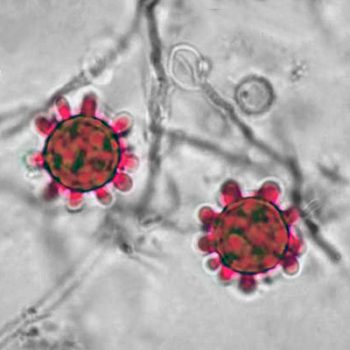 Pin
Pin Histoplasma capsulatum / AJC1 from UK, CC BY-SA 2.0, via Wikimedia Commons
Histoplasma capsulatum doesn’t need a hospital or a weakened immune system to harm you. It lives in soil that contains bat or bird droppings, especially in caves, old buildings, and chicken coops. If you breathe in the spores, you could end up with histoplasmosis. And it’s not always mild—some cases turn deadly, even in healthy people.
This fungus starts in your lungs, causing symptoms like coughing, chest pain, and fever. But in some cases, it spreads to other organs and becomes disseminated histoplasmosis, which can be fatal if not treated fast. In parts of the U.S., especially around the Ohio and Mississippi River valleys, it’s more common than people realize. You might just be hiking or exploring an abandoned barn, and suddenly you’re infected.
It’s not just rare travelers or spelunkers at risk. Farmers, construction workers, even gardeners have been hit by this. And doctors often misdiagnose it as tuberculosis or pneumonia. That delay can cost lives. Histoplasma capsulatum proves that the most deadly fungus doesn’t always need a hospital setting to attack.
5. Mucorales (Mucormycosis) – The Flesh-Eating Black Fungus
 Pin
Pin Mucorales (Mucormycosis) / Nephron, CC BY-SA 3.0, via Wikimedia Commons
When COVID-19 hit India hard, something even darker followed: black fungus, or mucormycosis. Caused by a group of fungi called Mucorales, this infection doesn’t just make you sick—it can eat your face, your eyes, even your brain. It often starts in the nose or sinuses and spreads with brutal speed. Within days, it can lead to blindness, paralysis, or death if it reaches the brain.
What makes it one of the most deadly fungus types is how aggressively it invades tissue. It literally kills flesh, cutting off blood supply to infected areas. Surgeons sometimes have to remove eyes, jaws, or parts of the skull just to stop it. It mainly hits people with diabetes or those who’ve taken steroids during illness—like COVID-19 patients.
The scary part? These fungi are everywhere—on bread, soil, and even the air. Healthy people don’t usually get infected, but those with health issues are at serious risk. Mucormycosis doesn’t just cause suffering. It disfigures, disables, and kills within days.
6. Coccidioides immitis – The Valley Fever Fungus
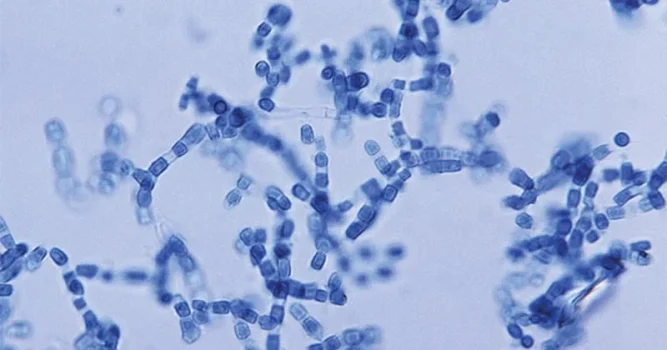 Pin
Pin Coccidioides immitis / Image from CDC
Coccidioides immitis is behind something called Valley Fever, and it’s not just a desert problem. Found mostly in the soil of the American Southwest, this fungus spreads through the air when soil is disturbed. Construction sites, farming, or even a windy day can send spores flying. If you inhale them, you might not feel anything at first. But for some, it develops into a lung infection that can turn life-threatening.
Symptoms can mimic the flu: cough, fever, fatigue. But when the infection spreads outside the lungs, it attacks bones, skin, and the brain. That’s where it becomes deadly. And unlike some other fungal infections, Coccidioides doesn’t always need a weak immune system to strike hard.
Cases are rising because of climate change and more dust storms. People moving into new housing developments or visiting desert areas may not even know they’re at risk. Coccidioides immitis may not sound scary at first—but it’s one of the most deadly fungus types creeping into more lives every year.
7. Talaromyces marneffei – Asia’s Quiet Killer Fungus
 Pin
Pin Talaromyces marneffei / James Gathany, Public domain, via Wikimedia Commons
Talaromyces marneffei isn’t well known in the West, but in parts of Southeast Asia, it’s a deadly problem—especially for people living with HIV. This fungus lives in bamboo rats and the surrounding soil. It spreads through inhalation of spores, but it’s not just a lung issue. Once inside the body, it can spread to the liver, spleen, skin, and even bones. Left untreated, it kills quickly.
What makes it one of the most deadly fungus species is how hard it is to diagnose. Symptoms can look like tuberculosis, skin infections, or even lymphoma. That leads to delays in treatment—and with Talaromyces marneffei, delays are deadly.
It mostly affects those with compromised immunity, but its range is growing. Global travel and shifting weather patterns are expanding where this fungus shows up. The scary part? It’s often misdiagnosed until it’s too late, especially in rural hospitals without advanced lab testing. This silent killer proves that some of the most dangerous fungal infections are hiding in plain sight.
8. Blastomyces dermatitidis – The Great Lakes Menace
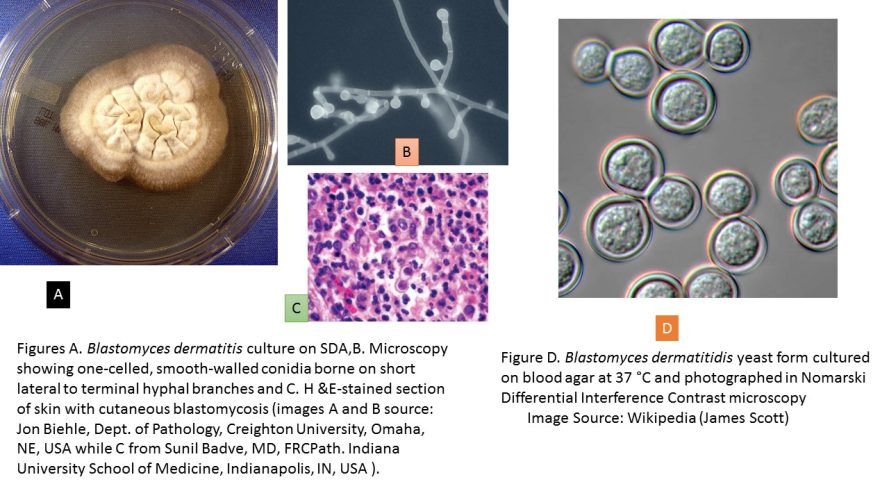 Pin
Pin Blastomyces dermatitidis / Image from universe84a
Blastomyces dermatitidis lives in moist soil and decaying wood, especially around the Great Lakes and Mississippi River regions. You can breathe in its spores without even knowing it. At first, it may seem like a mild lung infection. But this fungus doesn’t always stay in the lungs. It can spread to your skin, bones, and even your brain. Once it spreads, treatment becomes a race against time.
What makes this one of the most deadly fungus types is how easily it hides behind symptoms that look like other common illnesses—coughing, fever, or skin sores. People often ignore it until the infection gets worse and harder to treat. It doesn’t always need a weakened immune system to cause serious illness either. Even healthy people have ended up hospitalized or worse.
Outbreaks have happened among campers, forestry workers, and even dog owners, since pets can catch it too. Blastomyces isn’t talked about much, but it’s a serious threat in regions where it thrives—making it a true hidden danger in North America.
9. Paracoccidioides brasiliensis – South America's Silent Foe
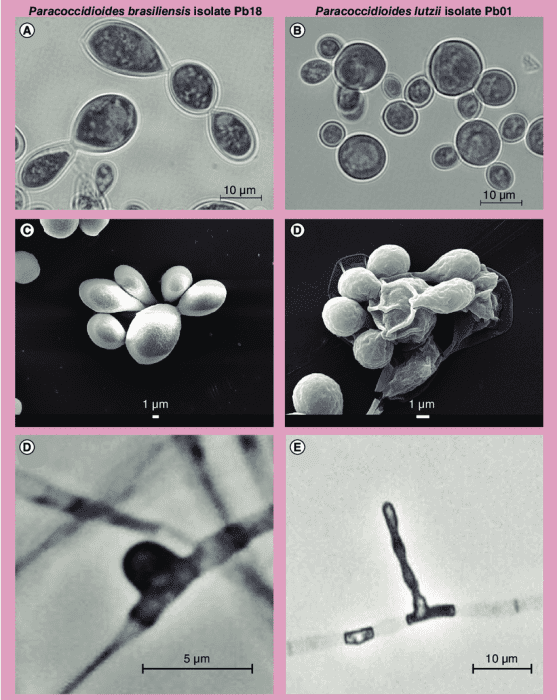 Pin
Pin Paracoccidioides brasiliensis / Image by Anamelia L Bocca from Research Gate
Paracoccidioides brasiliensis might not ring a bell, but in rural South America, it’s a huge problem. It causes paracoccidioidomycosis—a mouthful, yes, but also a deadly and disfiguring fungal disease. This fungus hides in soil, especially in coffee-growing regions. People usually inhale the spores while working the land. It starts in the lungs but can spread throughout the body, affecting the skin, lymph nodes, and even the digestive tract.
This infection mainly hits men working outdoors, but anyone exposed can be affected. Symptoms can take weeks or even years to appear, and by the time they do, the damage is often deep—ulcers, breathing issues, and severe weight loss. It’s often mistaken for cancer or TB, which delays treatment even more.
What makes it one of the most deadly fungus infections is the fact that it’s underdiagnosed, underreported, and usually found in areas with poor healthcare access. Left untreated, it causes serious, irreversible damage and sometimes death. It’s a major health issue—just rarely talked about.
10. How to Fight and Stay Safe from Deadly Fungi
Now that you know about the most deadly fungus, it’s essential to take preventive steps to protect yourself and your loved ones. Many of these fungi are found in environments we often overlook, like the soil, construction sites, or even hospital rooms. Here’s how you can reduce your risk:
- Practice Good Hygiene and Cleanliness: Always wash your hands thoroughly, especially after touching soil or cleaning areas where fungi thrive, like basements or attics. If you work in an environment where fungal spores are common (construction sites, farms, or caves), consider wearing protective gear like masks and gloves.
- Keep Your Immune System Strong: One of the main reasons people fall victim to deadly fungi is a weakened immune system. Ensure you’re eating a balanced diet, getting enough sleep, and exercising to boost your natural defenses. If you have a condition like diabetes or HIV, keeping it well-managed will reduce your risk.
- Avoid Dusty or Damp Environments: Fungi love moist, dusty environments. When working in these conditions, wear protective masks and try to limit exposure. If you live in areas known for valley fever or histoplasmosis, take extra care during dust storms or outdoor activities.
- Seek Medical Attention Early: Many deadly fungal infections start with mild flu-like symptoms. Don’t ignore persistent coughing, chest pain, fever, or unusual skin lesions. Early detection can save lives. In particular, people with compromised immune systems should be extra vigilant.
- Stay Informed: Stay aware of local outbreaks or health advisories. For example, during the pandemic, the rise of mucormycosis in India highlighted how quickly fungal infections can spread in specific regions. Knowing what’s happening in your area can help you stay prepared.
FAQs
The most deadly fungus in the world is Aspergillus fumigatus. It can cause invasive aspergillosis, particularly in people with weakened immune systems, and can rapidly spread to organs like the brain, lungs, and heart. This infection is often fatal if not treated quickly.
While many deadly fungi primarily affect people with compromised immune systems, healthy individuals are not completely safe. For example, Coccidioides immitis (which causes Valley Fever) can affect healthy individuals exposed to contaminated soil, and fungi like Blastomyces dermatitidis can infect anyone who inhales its spores in high-risk areas.
To protect yourself, avoid exposure to environments with high fungal spore counts, such as construction sites, farms, or caves. Use protective gear like masks and gloves when necessary. Keeping your immune system strong by eating well, exercising, and managing existing health conditions will also reduce your risk.
Symptoms vary depending on the type of fungus and the area it infects. Common symptoms include fever, coughing, chest pain, fatigue, skin lesions, or confusion. Invasive fungal infections can spread quickly, so it’s crucial to seek medical attention if symptoms persist or worsen.
Treatment typically involves antifungal medications, which vary depending on the specific fungus. Some fungi, like Candida auris and Mucorales, are resistant to common antifungal drugs, making treatment more challenging. Early diagnosis and aggressive treatment are key to improving the chances of recovery.





